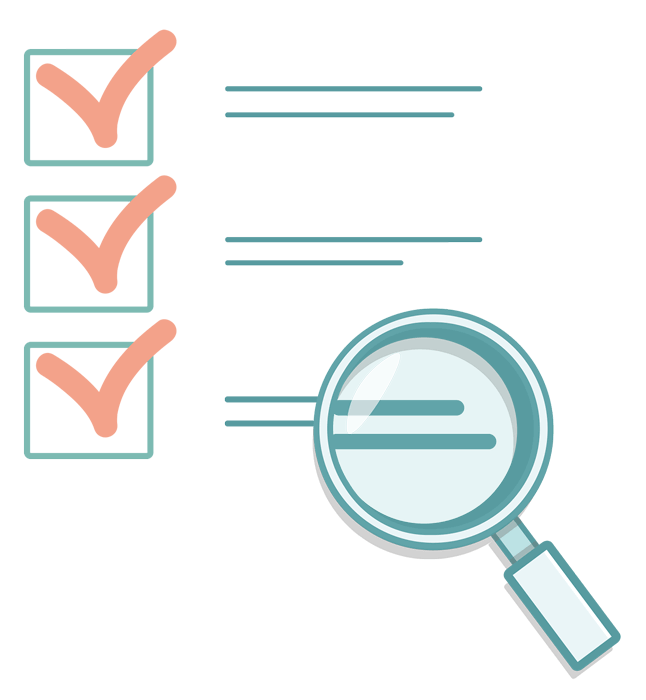 0 Puchased
0 Puchased
Learn2Serve Food Manager Certification - Notes QUESTIONS AND ANSWERS 2024( A+ GRADED 100% VERIFIED).
read moreNotes Summaries
Thawing food can be part of the cooking process if - ANSWER cooked to the requirements of the FDA food code Foodborne Pathogens easily transmitted through food - ANSWER Salmonella, Shigella, Norovirus, E Coli, Hepatitis A, Clostridium Botulinum Salmonella - Cause - ANSWER Can be found on any food item exposed to animal waste Salmonella - Infection - ANSWER immediate, develops within 12-72 hours and lasts 4-7 days Salmonella - Symptoms - ANSWER food poisoning Salmonella - Prevention - ANSWER avoid cross contamination, maintain personal hygiene, clean workspaces, cook foods properly Shigella - Cause - ANSWER Pests or human-to-human by infected feces. Shigella is a bacteria found in the digestive tract of humans Shigella - Infection - ANSWER develops within 2-3 days of exposure Shigella - Symptoms - ANSWER loose, watery stool. Dysentery in severe cases Shigella - Prevention - ANSWER may spread to others through contaminated stool up to 4 weeks after symptoms have passed Norovirus - Cause - ANSWER food items or water sources contaminated with infected feces or fluids Norovirus - Infection - ANSWER sudden onset, 1-2 days, extremely contagious Norovirus - Symptoms - ANSWER gastroenteritis or "stomach flu" Norovirus - Prevention - ANSWER can be infectious three days - two weeks after recovery E.Coli - Cause - ANSWER Poor processing and handling of food that has been contaminated (i.e. manure-based fertilizers). Bacteria found in the digestive tract of humans, most strains harmless. E. Coli - Infection - ANSWER develops within 3-4 days E. Coli - Symptoms - ANSWER bloody diarrhea, severe cases cause blood problems and kidney failure E. Coli - Prevention - ANSWER proper handling and cooking to safe temperatures, proper hand washing after restroom, proper fruit and veg washing Hepatitis A - Cause - ANSWER raw or undercooked shellfish harvested from polluted waters, other infected individuals, cold cuts, fresh squeeze juices, raw fruits and veg, water contaminated with sewage Hepatitis A - Infection - ANSWER sudden onset, lasts less than two months Hepatitis A - Symptoms - ANSWER fever, nausea, loss of appetite, abdominal discomfort, dark urine, jaundice Hepatitis A - Prevention - ANSWER Proper sanitation, personal hygiene, water treatment with chlorination, heating to 185 degrees for one minute Clostridium botulinum - Causes - ANSWER occurs in badly packaged or damaged canned and vacuum-sealed foods including canned vegetables Clostridium botulinum - Infection - ANSWER onset 4-6 hours, targets the nervous system and may cause permanent damage if not treated immediately Clostridium botulinum - Symptoms - ANSWER Botulism, neurotoxicity - double vision, inability to swallow, speech difficulty, progressive paralysis of respiratory system, can be fatal Clostridium botulinum - Prevention - ANSWER canned and packaged items are in good condition upon receipt, even small dents can be potentially dangerous (best to return to vendor) Food spoilage is caused by - ANSWER rough handling, exaggerated high or ow keeping temps, bacteria, enzymes, mold and pests Dehydration and Overheating can be used to reduce - ANSWER pathogenic biological contaminants Vegetables regularly covered in soil, like potatoes and mushrooms, should be stored - ANSWER below or beneath other veggies so that any loose soil will not fall on clean items TCS foods include (9 categories) - ANSWER Time/Temp Control for Safety: 1) raw and most cooked meat, poultry and seafood; 2) most milk and dairy products; 3) eggs; 4) cooked veggies and pasta; 5) raw seed sprouts and soy products; 6) cut melons; 7) cut leafy greens; 8) garlic in oil that have not been processed; 9) cut tomatoes Conditions that cause disease causing bacteria to multiply include (5) - ANSWER 1) Foods high in protein, moist and slightly acidic PH; 2) Time; 3) Temp in the danger zone 41 to 135 degrees F; 4) Oxygen; 5) Moisture Bacteria only need _____ amount of time in the danger zone to multiply - ANSWER 10-20 mins The danger zone temperature is between - ANSWER 41 and 135 degrees F Cooking at high enough temps with kill most bacteria BUT - ANSWER does not destroy all dangers of toxins; contamination can occur after cooking What moisture rating do bacteria need to become pathogenic? - ANSWER above 0.85 AW Top Food Allergens include (8): - ANSWER Peanuts, Soybeans, Milk, Eggs, Fish, Shellfish, Tree nuts, Wheat Does Cold Preservation kill bacteria? - ANSWER No, it only slows the growth. Refrigeration temps must be 34-40 degrees F for short term storage What are types of Heat Preservation? - ANSWER Pasteurization , Ultra Heat Treatment (UHT), Sterilization & Canning What is Pasteurization? - ANSWER A type of heat preservation, which heats food to mild temps and cools immediately, that still requires refrigeration afterwards. Commonly for dairy products, eggs and wine. What is Ultra Heat Treatment (UHT)? - ANSWER a type of heat preservation like pasteurization but uses higher temps What is Sterilization & Canning? - ANSWER a type of heat preservation, which heats foods at high temps for a long enough time to destroy all organisms and foods often lose quality - canned foods High Risk foods include: - ANSWER protein rich, moist and at room temperature; "Ready-to-Eat" foods Frozen foods enter the danger zone when - ANSWER Thawing - ice crystals may remain in the center of large foods not thawed properly When is it unsafe to thaw frozen foods? - ANSWER At room temperature You may only microwave foods to thaw safely if - ANSWER foods are cooked immediately afterwards You may thaw foods in the refrigerator at what temperature? - ANSWER colder than 41 degrees F How can you thaw food using running water? - ANSWER Submerged under running water at or below 70 degrees F Hot food should be cooled between what temps for what amount of time to be considered safe? - ANSWER first between 135 - 70 degrees F within 2 hours, then from 70 - 41 degrees F within the next 4 hours What are methods of cooling hot food? - ANSWER In a blast chiller, dividing food into smaller or thinner portions and/or smaller containers, dividing into shallow pans 2-3 inches deep What is the safest way to reheat food? - ANSWER Reheat to at least 165 degrees for 15+ seconds; only reheat once What is the method of holding and reheating TCS foods not intended for immediate consumption? - ANSWER hold at 135 degrees or above, reheat to at least 165 degrees, rapidly cool and refrigerate or hold at 41 degrees or less for no longer than 2 hours The maximum amount of time foods can be held without a temperature control is - ANSWER four hours When should you check temperature of TCS foods? - ANSWER at receipt of delivery, towards end of cooking or reheating, toward the end of thawing, frequently during hot/cold holding, once of the actual freezer Employees cannot eat in the prep area but they can drink only if - ANSWER from containers with both a straw and lid Food employees should wear clothing of what color and without what two things? - ANSWER light color; without buttons and buckles All poultry products should come from facilities inspected by the - ANSWER USDA How must raw shell eggs be received at a food establishment? - ANSWER in refrigerated equipment at a temp of 45 degrees or less Food must be stored at what level above the floor? - ANSWER at least 6 inches off of the floor Raw foods must be stored above or below ready-to-eat foods? why? - ANSWER below to avoid contamination Using the FIFO principle, how should foods be stored? - ANSWER foods with the longest shelf life below foods with short shelf life What is the ideal temperature to store dry foods? - ANSWER between 50 and 70 degrees F What is the keep time and temp of Ready-To-Eat foods that are not frozen? - ANSWER no longer than 7 days at 41 degrees F or less Sanitization can be achieved by what two methods? - ANSWER heat or chemicals What is the method for sanitizing with hot water? (think jacuzzi) - ANSWER submerged in water at a minimum of 171 degrees F for at least 30 seconds What is the method for sanitizing with steam? (think dishwasher) - ANSWER steam at least 200 degrees F applied for a minimum of 5 seconds Items must be allowed to fully _____ after a method is applied in order to be considered sanitized. Do not _____ after items have been sanitized. - ANSWER air dry, rinse Chemicals used for sanitization must meet requirements by what two regulatory bodies? - ANSWER FDA food code and OSHA (limits for gases dissolved in solutions) When should surfaces be cleaned and sanitized? (5 different times) - ANSWER before using the equipment, when switching to another type of food, every four hours if in constant use, immediately after use, at the end of the shift If in constant use, surfaces should be cleaned and sanitized at least how often? - ANSWER every 4 hours What are the three main types of chemical sanitizing compounds approved for use on food premises? - ANSWER 1) Chlorine, 2) Iodine, 3) Quaternary Ammonium (Quats) What are the pros and cons of using Chlorine for sanitizing? - ANSWER Pros - effective in both hard and soft water, Cons - may corrode metals when used at high temps What are the pros and cons of using Iodine for sanitizing? - ANSWER Pro- works quickly, Cons - stains silver and copper Iodine must be at a minimum temp of _____ at a PH of ____ or higher, and a concentration between _________ mg/L - ANSWER 68 degrees F, 5, 12.5 - 25 Minimum concentration for Chlorine in a three-compartment sink is ________ppm - ANSWER 50 What are the pros and cons of using Quaternary Ammonium for sanitizing? - ANSWER Pros - odor free and non-corrosive, Cons - does not work in hard water (500mg/L or less), not effective for some bacteria What is the minimum temp for Quats sanitization to be effective? - ANSWER 75 degrees F Storage areas should be near _______ areas, and if possible, delivered should never be carried through _______ _______ areas - ANSWER delivery; food prep Hand washing sinks must be separate from - ANSWER other sinks in the establishment (i.e. food prep) What is the only food code approved wood for cutting boards, blocks and pizza paddles? - ANSWER Maple and similar close-grained hardwoods Building Materials - the best type of floors are those which do not have what? - ANSWER 90 degrees angles where the walls and floors meet; should be coved to shed water away from the wall Wiping cloths that are not dry should be stored in what way between uses? - ANSWER In a sanitizer solution of adequate concentration What is a danger of storing non-dry wiping cloths? - ANSWER cloths soiled with organic material may overcome the effectiveness of, and neutralize, the sanitizer Wiping down a surface with a reusable wet cloth stored in a sanitizer solution is acceptable to clean up food spills and wipe down equipment surfaces but it does not satisfy what? - ANSWER the requirements by the food code for methods and frequency of cleaning and sanitizing of food contact surfaces Wiping a surface with a dry disposable towel using a spray bottle containing pre-mixed sanitizing solution alone... - ANSWER does not constitute proper cleaning and sanitizing of food contact surfaces required by the food code HACCP stands for - ANSWER Hazard Analysis Critical Control Point system What is the goal of the HACCP system? - ANSWER to streamline food safety practices, provides the best security against contamination (biological, chemical and physical) What 5 tasks must be completed prior to developing a HACCP system? - ANSWER 1) Assemble a team, 2) Describe the food products and method of distribution, 3) Describe the intended use and consumers of the product, 4) Develop a Flow Diagram which briefly describes the steps in the process, 5) Verify the Flow Diagram Who should not develop the HACCP team alone? - ANSWER Experts outside of the organization What are the 7 principles of the HACCP plan? - ANSWER 1) Conduct a hazard analysis, 2) Determine the CCPs (critical control points), 3) Establish Critical Limits, 4) Establish Monitoring Procedures, 5) Establish Corrective Actions, 6) Establish Verification Procedures, 7) Establish Record-Keeping and Documentation Procedures What are four possible hazards that might be analyzed during the first step of the HACCP plan? - ANSWER Ingredients and raw materials, steps in the process, product storage and distribution, final prep and use by the consumer What are the two main stages of the Hazard Analysis step during the development of the HACCP system? - ANSWER Hazard Identification - lists all possible hazards (bio, chem, phys, or historically health-related adverse effects of the product) and Hazard Evaluation - rates the severity of the hazard and likelihood of occurrence What is the main focus of the initial Hazard Analysis? - ANSWER Safety, not quality Critical Control Points, or CCPS, are defined as - ANSWER potential hazards that can be prevented, eliminated or reduced to acceptable levels What must be applied at each CCP? - ANSWER A control measure based on the facility layout, equipment used, ingredients and processes Refrigeration of a pre-cooked food to prevent hazardous microorganisms from multip
read moreA+ QUIZZES, TUTORING AND EXAMS SERVICES Need expert assistance with your studies and get A+? Worry no more. I offer top-tier tutoring and homework help in psychology, nursing, Human Resource Management, and Mathematics. As a tutor on Knoowy, I am committed to providing high-quality, scholarly work that meets academic standards. Whether it's for quizzes, exams, or assignments, I guarantee excellent grades. Rely on my expertise to achieve your academic goals!!!

Do you make summaries or do you have any completed assignments? Upload your documents to Barmerit and earn money.
Upload Document
Barmerit customers have reviewed more than 700,000 summaries. This how you know that you are buying the best documents.

You can quickly pay through credit card or Barmerit-credit for the summaries. There is no membership needed.

Your fellow students write the study notes themselves, which is why the documents are always reliable and up-to-date. This ensures you quickly get to the core!
Price $12.00